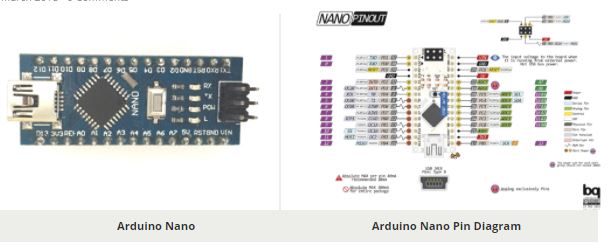
Goto Arduino Menu: Sketch->Include Library->Library Manager. This is used to show an accurate temperatureįor lower temperatures so you can get a feel for how the thermocouple isĪrduino Library for MAX6675 and DS18B20 MAX6675 Arduino Library The schematic below shows connection for the MAX6675 breakout board and also I just like to see a comparison of what is going on. The optional parts above allow you to see how well the thermocouple operatesĪt ambient temperature. The project is powered from the USB port.


Interface that provides the 12 output data bits.Ġ.25☌ Accuracy ( 20☌ to 80☌ ) (**) ☓☌ The output format of the MAX6675 is SPI - a digital clocked, read only,
#MAX6675 V1.2 ARDUINO NANO PINOUT SERIAL#
Type-K thermocouple trivial, as the above are included in the chip andĭon't even have to retrieve the analogue value the ADC generates aĭigital output which is transmitted as a 12bit serial sequence. You a in-built amplifier, Cold -Junction-Compensator (CJC) and an ADC. This is where the MAX6675 comes in as it has everything built-in Cold Junction Compensator (or an ice bath).
#MAX6675 V1.2 ARDUINO NANO PINOUT FULL#
That the full temperature reading is made available. compensate for the ambient temperature at the non-sensing end so This temperature, and add this voltage to the thermocouple voltage (you workīackwards to find the equivalent voltage when one end is at a temperature ofĠ☌) i.e. Thermocouple, and figure out the voltage that the thermocouple would have at You don't really want to mess around with an iceīath (unless you want better precision) so a technique calledĬold-Junction-Compensation (CJC) is used.īasically you measure the temperature of the (colder) end of the

The generated voltage is extremely small (~41uV / ☌), and is different forĭifferent types of thermocouple, so an amplifier is required to turn the

One side is magnetic while the other is not. Manganese, 2% aluminium and 1% silicon]] and and Alumel (Nickel Aluminium) [95% nickel, 2% Note: A Type K thermocouple is actually composed of Chromel


 0 kommentar(er)
0 kommentar(er)
